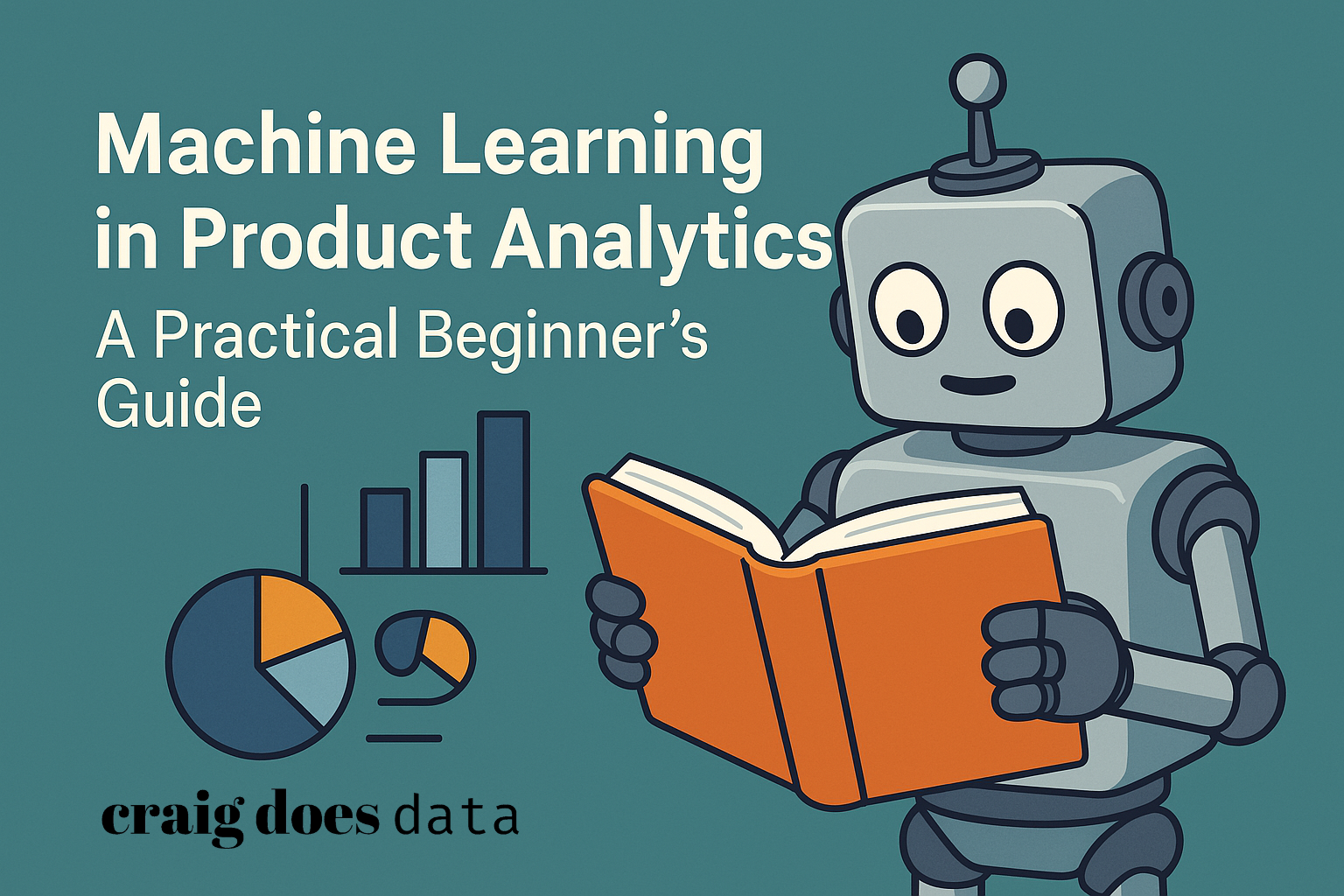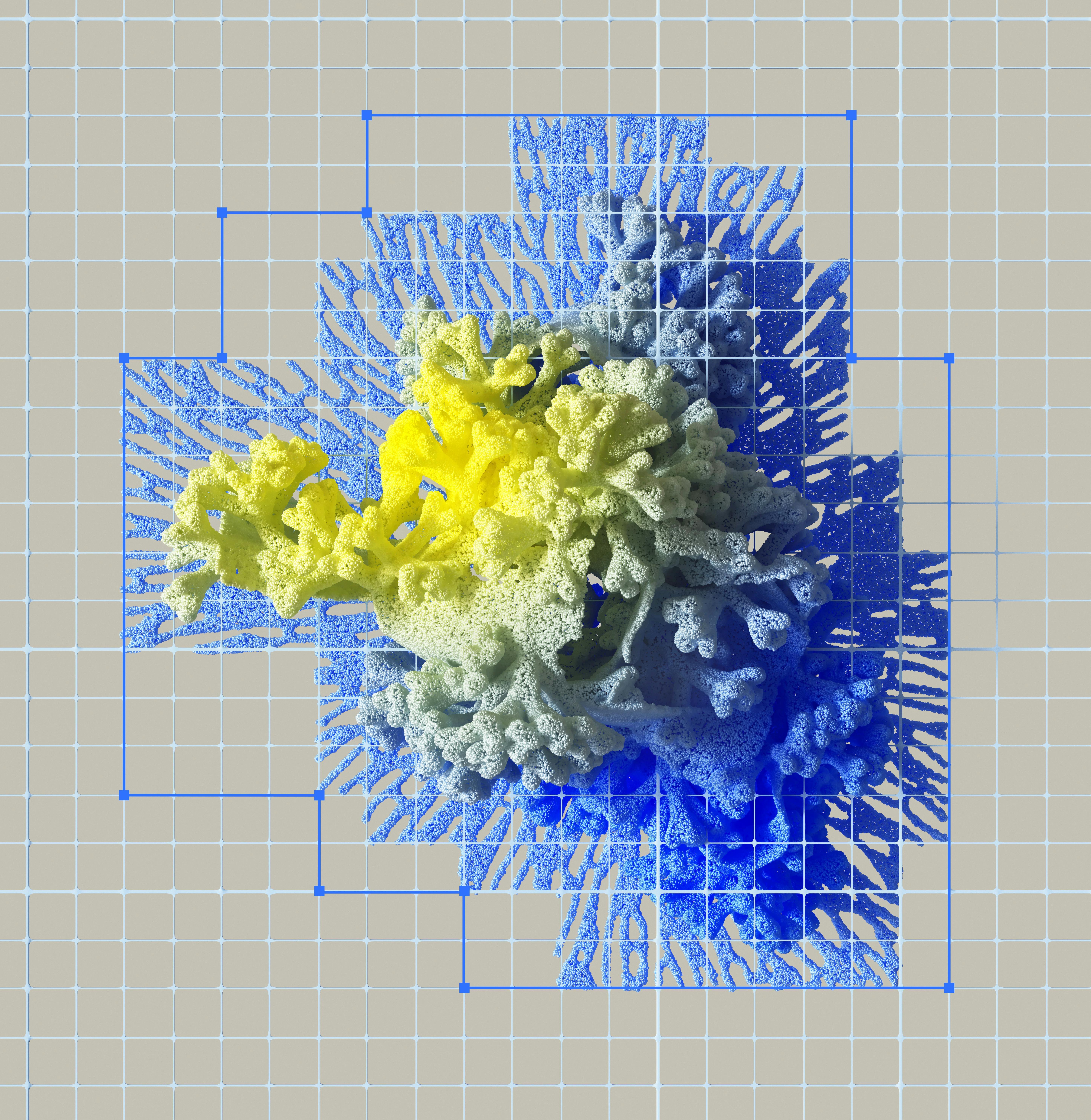
Machine Learning in Product Analytics: A Practical Beginner’s Guide
Introduction
In today's fast-paced, data-driven world, understanding how your product performs in the market can make or break a company. By analyzing user behavior, feature engagement, and revenue patterns, businesses gain insights that guide strategic decisions, optimize customer experiences, and fuel innovation. This is where product analytics comes into play—a structured approach to collecting and interpreting data related to product usage and performance.
Yet, as product ecosystems grow more complex, the volume and variety of data increase exponentially. Traditional methods of data interpretation, while useful, often struggle to keep pace with these expanding demands. Machine learning (ML) has emerged as a powerful ally in this domain, offering predictive insights and automating complex analyses that were previously too cumbersome to tackle in real time.
This article aims to provide a practical guide for anyone looking to leverage machine learning in product analytics. From explaining the basics of how machine learning works to walking you through the steps of implementing it in your workflows, we will cover essential concepts, use cases, and practical tips. Whether you're new to analytics or seeking to enhance your skills, this guide will help you harness the transformative capabilities of ML to better understand and optimize your products.
1. Understanding Product Analytics

Product analytics refers to the systematic process of collecting and analyzing data to understand how users interact with a product or service. It revolves around key performance metrics such as user engagement, feature adoption rates, user retention, and overall product usage patterns. By examining these metrics, businesses can identify what works well, what needs improvement, and how to focus efforts for maximum impact.
Traditionally, product analytics has involved techniques like descriptive statistics, A/B testing, and manual data exploration. Tools like Google Analytics or Mixpanel have allowed teams to visualize user journeys, conversion funnels, and other core metrics. While these methods have yielded valuable insights, they often rely on set reporting structures and predefined questions. The user—whether a product manager or analyst—must know exactly what to look for, and the tools have typically been limited to retrospective analysis. These systems are highly effective for generating static reports but can struggle with dynamic, predictive tasks.
As products evolve and user expectations shift, the limitations of purely traditional methods become more apparent. They are usually not designed to handle massive datasets in real time, nor are they optimized for discovering hidden patterns. They also often lack the predictive muscle needed to anticipate future behavior or uncover non-obvious user segments. This is where the need for more advanced, scalable analytics solutions arises.
Enter machine learning. While product analytics focuses on collecting and interpreting data, adding ML techniques can dramatically extend the scope of insights. Instead of just highlighting trends, machine learning can forecast them. Instead of relying on predefined assumptions, machine learning can discover patterns and user behaviors you didn’t even know to look for. By merging ML with product analytics, companies can accelerate learning cycles, personalize user experiences on the fly, and make data-driven decisions with a higher degree of precision and confidence.
2. Introduction to Machine Learning

Machine learning is a branch of artificial intelligence that focuses on enabling computer systems to learn patterns and make decisions with minimal human intervention. Rather than being explicitly programmed with rules for how to interpret data, ML algorithms discern patterns from the data itself and use these patterns to make predictions or classifications. The more data you feed them, the more accurately they can learn.
There are three main categories of machine learning: supervised learning, unsupervised learning, and reinforcement learning. Supervised learning involves training a model on a labeled dataset where the correct answers are already known. This approach is commonly used for tasks like classifying products into categories or predicting numerical values such as user lifetime value. Unsupervised learning, on the other hand, deals with data that isn’t labeled, making it well-suited for tasks like clustering similar users based on their behavior or identifying anomalies in product usage. Finally, reinforcement learning trains models to make decisions in an environment where they receive rewards or penalties based on their actions, a technique that is particularly popular in robotics and certain recommendation or optimization systems.
The value of ML in product analytics lies in its ability to learn from vast, often complex datasets in a way that is both dynamic and adaptive. Traditional analytics might tell you what happened in the past or is currently happening. Machine learning, however, can predict future user behavior, detect new patterns in real time, and even adapt to changes in user preferences without needing explicit reprogramming. This elevates product analytics from being merely descriptive to becoming truly predictive and prescriptive.
As you begin integrating ML into your analytics framework, it’s essential to understand that effective machine learning is not just about algorithms or models; it’s also about having high-quality data and a clear objective. ML thrives on large amounts of representative data, so gathering and cleaning that data is often a major task in itself. Nevertheless, once implemented, the insights gained can unlock powerful opportunities to refine your product strategy, personalize user experiences, and ultimately drive better outcomes for both the business and its customers.
3. How Machine Learning Enhances Product Analytics

Now that we’ve defined both product analytics and machine learning, let’s explore how combining these two can deliver capabilities that go beyond what traditional analytics can offer. At its core, machine learning supercharges product analytics by allowing for:
- Predictive power: Instead of merely describing historical trends, machine learning models can forecast user behavior, demand, or product usage. These forward-looking insights enable proactive decision-making, such as adjusting marketing strategies or launching new features at the perfect time.
- Efficiency and scalability: Advanced ML algorithms can handle massive datasets automatically, identifying patterns too subtle or complex for manual analysis. As a result, product teams can focus on higher-level strategic thinking rather than data wrangling.
- Personalization: One of the greatest advantages of ML in product analytics is the ability to tailor experiences to individual users. Recommendation engines leverage ML to offer personalized product suggestions, music playlists, or targeted promotions, driving user engagement and satisfaction.
Beyond these general benefits, there are several specific applications where machine learning shines in product analytics:
- Customer segmentation: Using unsupervised learning methods like clustering, machine learning can group users who share similar behaviors or characteristics. This empowers product managers to craft specialized features or marketing campaigns tailored to each segment’s unique preferences.
- Churn prediction: Supervised learning models can analyze usage frequency, support tickets, and other engagement metrics to predict which customers are likely to discontinue using the product. Early identification of at-risk users allows companies to intervene with targeted retention efforts.
- Recommendation systems: Recommendation algorithms (often built using collaborative filtering or deep learning) suggest products or content to users based on their past behaviors and the behaviors of similar users. This increases user satisfaction by helping them discover relevant offerings quickly.
Numerous organizations have already reaped the rewards of combining ML with product analytics. For instance, streaming service giants like Netflix and Spotify rely heavily on recommendation engines to keep users engaged and satisfied. By analyzing watch or listen patterns, they continually refine their models to suggest content that resonates with individual users’ tastes.
In the e-commerce realm, companies like Amazon use predictive models to optimize inventory and supply chain management. They analyze vast pools of data to anticipate demand for various products, ensure timely restocking, and personalize the shopping experience for each customer. Similarly, fintech platforms such as Klarna use ML-driven fraud detection systems to scrutinize unusual spending patterns or suspicious transactions in real time, safeguarding user accounts and building trust.
Consider a smaller-scale but illustrative case study: a mid-sized SaaS company offering project management tools. They leveraged ML-based churn prediction to flag accounts with decreasing engagement, frequent password resets, or support ticket spikes. By proactively reaching out to these at-risk customers with incentives or guided product tutorials, they reduced churn by 15% within a single quarter. Coupled with machine learning–driven recommendations for add-on features, they not only retained existing clients but also drove incremental revenue from targeted upsells.
These real-world examples showcase the significant impact of ML-driven insights. While not a silver bullet, machine learning provides product teams with a potent toolset to uncover hidden opportunities, optimize user experiences, and remain competitive in an ever-evolving market. It shifts analytics from reactive reporting to proactive strategy, helping businesses make more informed decisions based on data that updates and evolves in real time.
4. Getting Started with Machine Learning in Product Analytics

Implementing machine learning in your product analytics strategy may sound complex, but it doesn’t have to be overwhelming—especially if you break the process down into manageable steps. Below is an outline to guide beginners through the critical phases.
a) Data Collection and Preparation
Good machine learning models rely on good data. Begin by identifying the data sources that matter the most to your product’s performance, such as user logs, transactional records, or customer support tickets. Modern analytics stacks often include data warehousing solutions like Snowflake, Redshift, or BigQuery that can consolidate data from multiple sources.
Once you’ve gathered the relevant data, focus on data cleaning—removing duplicates, fixing errors, and handling missing values. You’ll also want to engineer features that can help your model pick out patterns more easily. For example, you might create a feature that reflects how often a user logs in per week or how much time they spend on a certain feature. This phase can be time-consuming, but it’s pivotal because clean, well-structured data lays the foundation for more accurate and reliable models.
b) Selecting the Right Machine Learning Model
The choice of model depends on your objectives. Are you aiming to predict a numeric outcome, such as the expected lifetime value of a customer? Consider regression models like linear regression or ensemble methods like random forests. Are you trying to classify users or events? Logistic regression or gradient boosting machines may be suitable. If you’re seeking to discover hidden groupings in your data, clustering methods like k-means may be the answer.
Simpler models are often the best starting point for beginners. They are easier to interpret, quicker to train, and sufficient for many straightforward tasks. As you become more comfortable and your data grows in complexity, you can experiment with more advanced methods like neural networks or deep learning architectures. Keep in mind that model accuracy is not the only priority; interpretability, ease of deployment, and computational efficiency also matter in a production environment.
c) Training and Testing the Model
After selecting a suitable algorithm, you’ll split your dataset into training and testing subsets—commonly in an 80/20 or 70/30 ratio. The model learns from the training set, while the test set is used to evaluate its performance on unseen data. This helps you catch issues like overfitting, where a model performs extremely well on training data but fails to generalize to new data.
Depending on your objectives, you might measure performance with metrics like accuracy, precision, recall, or F1-score for classification tasks, and mean squared error (MSE) or mean absolute error (MAE) for regression tasks. Optimize your model iteratively, adjusting hyperparameters and revisiting your feature engineering choices until you strike a good balance between performance and generalizability.
d) Implementing and Monitoring the Model
The final step is to put your model into production—meaning it starts making predictions or classifications that impact real product and business decisions. Implementation can vary depending on your infrastructure. Some teams embed their models directly into web applications through APIs. Others rely on analytics or data science platforms that schedule model inference jobs to run at regular intervals.
Monitoring is critical. Over time, user behavior, product features, or market conditions can shift, degrading your model’s performance. Regularly track performance metrics, and be prepared to retrain or update your model as needed. This is an ongoing process: as your product evolves and new data comes in, your model must evolve as well.
For beginners, an excellent strategy is to leverage accessible tools and platforms that offer end-to-end solutions—from data ingestion and feature engineering to model deployment. Services like Azure Machine Learning, Amazon SageMaker, or Google Cloud AutoML can drastically simplify the process. Alternatively, frameworks such as scikit-learn (Python) or caret (R) provide user-friendly APIs for experimentation.
By starting small—perhaps with a single predictive task like user churn prediction—you can build familiarity and confidence in each step of the machine learning workflow. Once you see tangible results, it’s easier to expand your approach to new use cases, refining and scaling your ML initiatives to transform your product analytics strategy.
5. Tools and Technologies for Machine Learning in Product Analytics

The machine learning ecosystem is both vast and dynamic, offering a range of tools designed to cater to different levels of expertise, project complexities, and performance requirements. When selecting the right tool or platform for machine learning in product analytics, consider factors like ease of use, scalability, cost, and how well it integrates with your existing infrastructure.
TensorFlow, developed by Google, is one of the most popular frameworks for building and deploying machine learning models at scale. It supports everything from simple linear models to state-of-the-art deep learning architectures. TensorFlow also has an easy-to-use interface called Keras, which simplifies the process of constructing neural networks.
PyTorch, backed by Meta, has gained widespread adoption for its flexible architecture and strong community support. It’s particularly well-liked among researchers and data scientists for its dynamic computational graph, which makes rapid experimentation more straightforward compared to some other frameworks.
On the simpler end of the spectrum, scikit-learn (Python) is a go-to library for those just getting started with machine learning. It offers well-documented implementations of everything from basic regression to ensemble methods, making it a great choice for quick prototypes and smaller production systems. h2o.ai is another contender, offering an automated machine learning platform that helps you rapidly compare different models and tune hyperparameters with minimal manual effort.
From a product analytics standpoint, integration with platforms like Google Analytics or Mixpanel could be beneficial for gathering real-time data streams. Some of these analytics platforms have built-in ML capabilities for tasks like anomaly detection, funnel optimization, or user segmentation. If you’re heavily invested in the AWS ecosystem, Amazon SageMaker offers a comprehensive suite for data prep, model training, deployment, and monitoring. Similarly, Azure Machine Learning or Google Cloud AutoML might be attractive options if your company primarily relies on Microsoft Azure or Google Cloud Platform.
Ultimately, the best technology stack depends on your team’s existing skill set, the complexity of your product analytics requirements, and the scale at which you operate. If you anticipate rapid growth or large volumes of data, opt for frameworks and platforms known for their scalability. If you’re a solo developer or part of a small startup, pick something user-friendly that lets you prototype quickly. The key is to choose tools that align with your workflow, enabling you to focus on extracting insights rather than wrestling with technical overhead.
6. Challenges and Considerations

While the benefits of machine learning in product analytics are substantial, it’s important to recognize the hurdles that can arise—particularly for those new to the field. Addressing these challenges proactively ensures a smoother implementation and more sustainable results.
Data quality issues rank high on the list of challenges. Machine learning algorithms depend heavily on the quality, consistency, and quantity of data. Inconsistent logging standards, missing fields, or noisy data can lead to models that underperform or generate misleading insights. Implementing robust data governance practices and investing in data cleaning and validation are crucial steps toward mitigating these risks.
Another concern is model complexity. Even if you have top-notch data, building advanced models such as deep neural networks can be time-consuming and resource-intensive. These models might offer incremental performance gains, but they also increase the risk of overfitting or becoming “black boxes” that are difficult to interpret. Beginners should weigh the benefits of complex models against simpler, more transparent algorithms, especially when stakeholder trust and interpretability are paramount.
Resource constraints—including budget, computational power, and human expertise—can also limit the scope of ML initiatives. High-performing models often require GPU acceleration or cloud-based compute clusters, which can be expensive. Additionally, building and maintaining ML models demands specialized skills that might not be readily available within your team. Outsourcing or leveraging managed ML services can help, but that introduces its own set of complexities around vendor lock-in and data security.
On the ethical and social side, data privacy and bias loom large. As machine learning systems become more integral to product analytics, they often rely on personal or sensitive data to generate insights. Ensuring compliance with regulations like GDPR or CCPA, as well as maintaining a transparent data usage policy, is crucial to building and retaining user trust. Additionally, any biases embedded in your training data can manifest in your model’s predictions, inadvertently discriminating against certain user groups. Regular audits, diverse training sets, and fairness metrics can help mitigate these ethical pitfalls.
Despite these challenges, none are insurmountable. Successful integration of machine learning into product analytics calls for a balanced approach—one that pairs technical diligence (data cleaning, proper model selection, performance monitoring) with organizational readiness (clear objectives, stakeholder buy-in, adequate resources). By addressing potential obstacles upfront and striving for responsible use, you can ensure that the advantages of ML-driven insights far outweigh any difficulties encountered.
7. Future Trends in Machine Learning and Product Analytics

The intersection of machine learning and product analytics continues to evolve, driven by technological innovations and changing user expectations. One of the most promising developments is the rise of automated machine learning (AutoML), which automates model selection, hyperparameter tuning, and even feature engineering. AutoML lowers the barrier to entry, allowing non-experts to rapidly test various algorithms and identify the best-fit solutions.
Another fast-growing area is the integration of AI with Internet of Things (IoT) devices, where real-time data from sensors or wearables feeds directly into ML models. This can offer product teams unprecedented insights into how users interact with physical products in diverse environments. As edge computing technology matures, more complex ML models can be deployed locally on devices, enabling faster, more contextual analytics without constantly relying on cloud servers.
We can also anticipate greater regulatory scrutiny and ethical considerations around AI and data usage. Expect to see more standardized guidelines for transparent and interpretable AI, as well as stricter requirements for data governance and user consent. For product managers and data scientists, staying informed about these evolving policies will be as critical as mastering technical skills.
As these trends unfold, the potential for machine learning in product analytics will continue to expand. The key is for organizations to stay agile—adopting emerging tools, refining best practices, and always keeping the end-user experience front and center. By doing so, you remain poised to ride the wave of innovation, rather than being swept aside by it.
Conclusion
Throughout this guide, we’ve explored the pivotal role of product analytics in understanding user behavior, driving product improvements, and shaping strategic decisions. We’ve also seen how machine learning can supercharge these efforts by uncovering hidden patterns, providing predictive insights, and personalizing user experiences in ways that traditional methods simply can’t match.
From collecting and preparing data to choosing the right ML models, the path to a successful machine learning initiative can be both challenging and rewarding. By focusing on data quality, starting with simpler models, and continually monitoring performance, beginners can quickly build confidence and begin to see tangible returns on their efforts. Meanwhile, real-world applications—from advanced recommendation systems to churn prediction—demonstrate the immense value of integrating ML into product analytics workflows.
As the field continues to evolve—with the advent of AutoML, IoT integrations, and growing ethical considerations—those who harness machine learning responsibly and effectively will find themselves at the forefront of innovation. Now is an excellent time to explore, experiment, and invest in ML-driven analytics. By staying curious, asking the right questions, and leveraging the right tools, you’ll be well on your way to delivering products that not only meet users’ needs but anticipate them.
Ultimately, machine learning in product analytics is more than a technical endeavor—it’s a strategic advantage that helps organizations learn faster, adapt more quickly, and deliver superior experiences to their customers. Embrace the possibilities, remain adaptable, and let your data guide you to new horizons of product excellence.
What next?
If you found this article valuable, consider sharing it with colleagues, friends, or anyone interested in leveraging data to enhance product performance. The transformative potential of ML is just waiting to be unlocked—be a part of the community that’s driving this change and shaping the future of product analytics.
